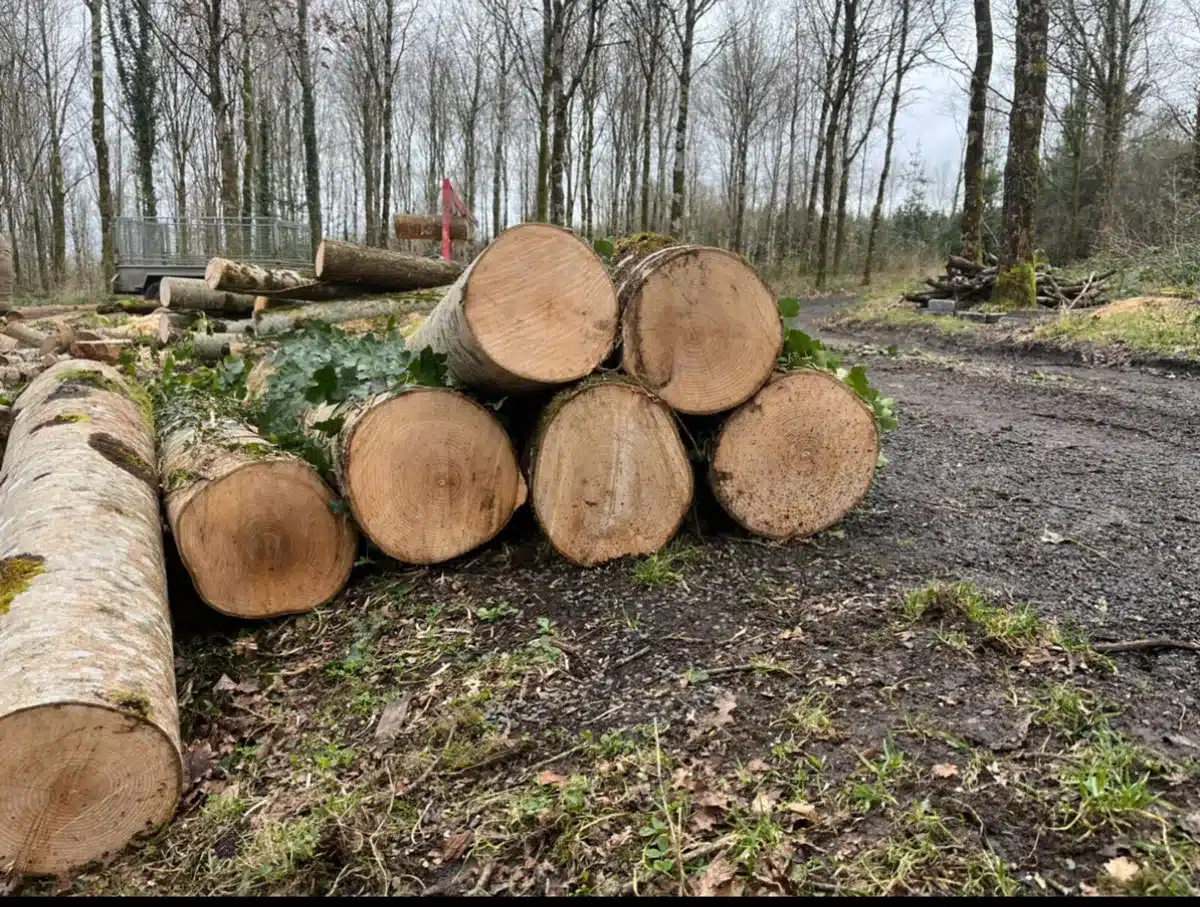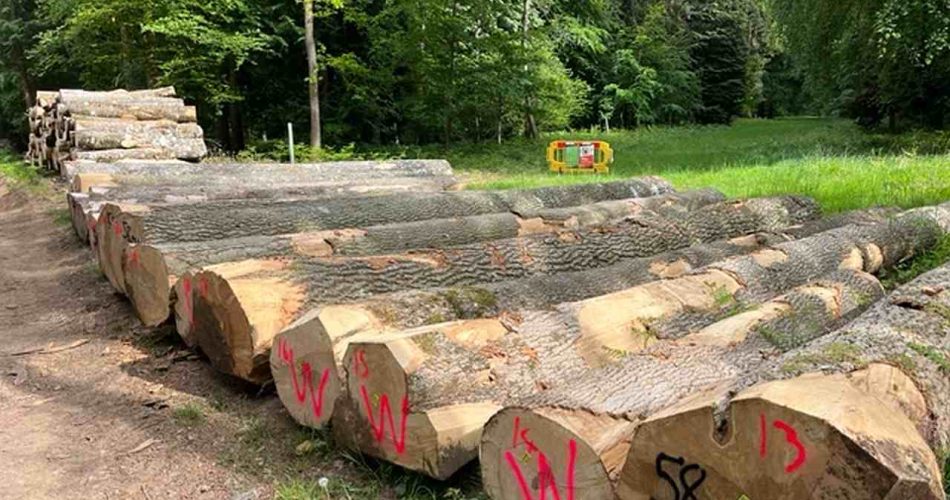When it comes to choosing the best firewood, ash often sparks curiosity among seasoned wood burners and novices alike. I’ve found myself wondering if ash truly lives up to its reputation as a top-notch choice for fueling cozy fires. Known for its excellent burning properties, ash is frequently touted as a reliable and efficient option, but what makes it stand out from other types of firewood?
In my quest to uncover the truth about ash firewood, I’ve discovered several intriguing factors that contribute to its popularity. From its low moisture content to its ability to burn steadily and produce minimal smoke, ash seems to check all the boxes for an ideal firewood. But is it really the best option for everyone? Let’s delve into the qualities of ash and see if it deserves a spot in your woodpile this season.
Characteristics Of Ash Wood
Ash wood stands out as a popular choice for firewood thanks to its properties that affect burning efficiency and use.
Density And Hardness
Ash is a hardwood with a moderate density, giving it a good balance between weight and strength. With a Janka hardness rating of around 1,200 lbf, it ranks well in durability. This makes it resistant to impact and wear, an advantage for both burning and other applications. The hardness contributes to its steady burn rate, making it efficient for heating.
Moisture Content
Freshly cut ash has a moisture content of approximately 35%. However, it dries relatively quickly compared to other hardwoods, reaching burnable levels in a season if properly split and stored. Its low moisture content once seasoned enhances its ability to produce steady heat with minimal smoke output, optimizing its use as firewood.
Burning Qualities Of Ash Wood

Burning Qualities Of Ash Wood
Ash wood, known for its excellent burning qualities, stands out in firewood options. Its unique properties make it a popular choice among many wood burners.
Heat Output
Ash provides a consistent and strong heat output. With a BTU (British Thermal Unit) rating of around 24 million per cord, ash delivers warmth effectively. It burns steadily and maintains heat longer than many other woods, making it efficient for home heating.
Smoke Production
Smoke production with ash is minimal compared to other firewoods. Its naturally low moisture content, especially when seasoned, results in cleaner burns. This reduces the amount of smoke released, making it suitable for indoor fireplaces and reducing air pollution concerns.
Creosote Buildup
Ash produces less creosote than many types of firewood. The low creosote formation is due to its clean combustion and minimal smoke output. Regular chimney maintenance remains essential, but using ash can help reduce the frequency needed for cleanings.
Comparisons With Other Firewoods
Comparing ash with other firewood types, I assess their heating properties and usability. Here’s how ash stacks up against oak, maple, and pine.
Oak
Oak serves as a benchmark in firewood choices due to its high density and energy output. It provides a BTU rating of approximately 24-29 million per cord, which ensures longer-lasting heat. While seasoned oak offers efficient burning, its high moisture content when freshly cut requires extended seasoning for optimal use. With its ability to burn steadily and generate substantial heat, oak competes strongly with ash in both heating efficiency and duration.
Maple
Maple firewood, particularly hard maple, offers moderate heat with a BTU rating around 22-25 million per cord. It’s favored for producing a clean burn, similar to ash. Hard maple requires longer seasoning due to its 30-32% moisture content when green, but once dried, it burns efficiently. While not as dense as oak, maple remains a reliable choice for those seeking balance between heat production and clean burning, sharing these benefits with ash.
Pine
Pine stands out for its quick ignition and fast-burning characteristics, thanks to its lower density. It delivers around 17-21 million BTU per cord, considerably less than ash, oak, or maple. Fresh pine exhibits higher sap levels, increasing its potential to produce creosote, which necessitates regular chimney maintenance. While pine is convenient for kindling and short burns, ash offers superior heat output and cleaner burns, making it more suitable for long-term heating needs.
Environmental Impact Of Using Ash
Ash firewood provides a sustainable and locally available option to many regions. Its environmental impact is influenced by several factors that enhance its appeal as firewood.
Sustainability
When harvested responsibly, ash contributes to sustainable firewood use. In the forests where ash trees dominate, they are often selected for removal due to infestations like the emerald ash borer, which threatens tree populations. Harvesting these trees helps maintain forest health, preventing overgrowth issues and managing the spread of pests. Additionally, ash trees grow back quickly compared to some hardwoods, allowing for ongoing use without significant depletion of resources. Utilizing ash in this way ensures a balanced approach between resource use and ecological conservation.
Local Availability
Ash’s availability in many regions makes it an accessible choice for local firewood sourcing. As ash trees are native to many parts of North America and Europe, they naturally occur in local forests, reducing transportation-related emissions associated with importing firewood from distant locations.
This local abundance translates to lowered carbon footprints and supports regional economies by promoting local firewood businesses. The use of locally sourced ash further integrates sustainable practices, supporting environmentally conscious choices in everyday activities.
Cost Considerations
When evaluating ash as firewood, cost is a significant factor. Generally, ash firewood costs range between $150 and $400 per cord. This price varies depending on factors like availability, location, and whether the wood is seasoned. I consider the cost-effective nature of ash appealing, given its high heat output at a relatively moderate price point compared to other hardwoods like oak or maple.
For instance, oak often carries higher costs due to extended seasoning times and high demand, which might lead to prices over $500 per cord. In contrast, the quicker seasoning time of ash keeps costs more stable. If buying locally in areas where ash thrives, like parts of North America and Europe, transportation costs might be lower, further enhancing affordability.
Additionally, purchasing ash firewood from sources dealing with tree infestations can sometimes lower prices, as sellers aim to quickly move stock. However, always ensure that these trees are responsibly harvested to maintain forest health. Investing in ash firewood offers value through both economic savings and high-efficiency heating, particularly in regions with strong supply chains.
Conclusion
Considering all the factors, ash firewood emerges as a highly efficient and environmentally friendly choice for heating. Its ability to produce consistent heat with minimal smoke makes it ideal for indoor fireplaces while reducing the need for frequent chimney cleanings. The sustainability of harvesting ash, especially in pest-affected areas, further enhances its appeal.
With competitive pricing and quick seasoning times, ash offers a practical and cost-effective solution for those seeking reliable firewood. Whether you’re prioritizing heat output, environmental impact, or cost, ash provides a balanced option that meets diverse needs effectively.



Comments